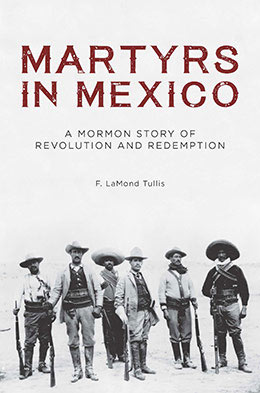Foreword
F. LaMond Tullis, "Foreword," in Martyrs in Mexico: A Mormon Story of Revolution and Redemption (Religious Studies Center, Brigham Young University; Salt Lake City: Deseret Book, 2018), ix–x.
In a sense, the substance of this monograph took shape in 1975, the year my thirteen-year-old son Michael and I spent the summer pulling a travel trailer from village to town to city in Mexico and Central America. From Colonia Juárez in Mexico’s state of Chihuahua to Guatemala City, south of the Isthmus of Tehuántepec, we interviewed scores of members of The Church of Jesus Christ of Latter-day Saints (LDS). Except in the larger towns and cities, there were no hotel—let alone motel—conveniences along the way of our interviews. The small towns we visited were consistent with the historical development of the Church in Mexico and Guatemala, where the faith took root in villages, generally among the poorer classes of people.
As part of the Church’s “sesquicentennial history project,” I had been commissioned to carry out a large research project on the history of the Church in Latin America.[1] I began my effort in Mexico, but in 1976, I expanded the interviewing to include Brazil, Uruguay, Argentina, Chile, Bolivia, and Peru (where, during 1966–67, I had completed field research for a book)[2].
A large research design for Church history in Latin America notwithstanding, for complicated and certainly idiosyncratic reasons, my effort on Mexico was all that emerged as a publication in book form.[3] Later, I donated my files and interview recordings to the Church History Department.
During our 1975 journey in Mexico, my son and I stopped in San Marcos, Tula, Hidalgo (the focus of this monograph); parked our RV trailer in a vacant lot owned by Bishop Saúl Villalobos and his wife, Violeta Pérez; and from there spent a week doing interviews. Aside from contacts in San Marcos, we visited Church members in San Miguel, Guerrero, Santiago Tezontlale (including the aged Trinidad Hernández), and a few other places in the state of Hidalgo.
Later, in the 1980s, while I was on a business trip to Mexico with my wife Marta Morrill (deceased, 2007), we stopped for Sunday services in San Marcos, renewed acquaintances, and met new members. Then, in the mid-1990s, under the sponsorship of Fernando Gómez and his Museum of Mormon History, we returned with others to the region, including the gravesite in Tula of the martyr Rafael Monroy Mera, where we, as have so many others, paused to pay homage.
All these things foreshadowed events in 2011–15 when my wife Eileen Roundy and I spent a year and a half in Mexico (and two and a half years in follow-up) as Church history missionaries researching and writing pioneer narratives, “fifth Sunday” history lessons, and articles dealing with the history of the Church in Mexico. Spanish versions of many of these are now in the country-specific portal for Mexico of lds.org[4] in the section “Historia de la Iglesia en México.” The present work on San Marcos is a continuation of these experiences and efforts.
If one were inclined to concentrate solely on the problems, failures, and shortcomings of people as they traverse time and space, she or he would obtain much information, some of it fundamentally important to our understanding of religions, societies, and peoples. However, we can add more to our understanding by concentrating on how people overcome their problems and, as religious persons, progressively enter a more powerful discipleship. That is the course of this monograph.
Unless otherwise stated in the text or the notes, all translations from Spanish to English are mine.
LaMond Tullis
Spring City, Utah
Notes
[1] I detail this and related matters in my article, “Writing about the International Church: A Personal Odyssey in Mexico,” Journal of Mormon History 42, no. 4 (October 2016): 1–30.
[2] LaMond Tullis, Lord and Peasant in Peru: A Paradigm of Political and Social Change (Cambridge, MA: Harvard University Press, 1970).
[3] LaMond Tullis, Mormons in Mexico: The Dynamics of Faith and Culture (Logan: Utah State University Press, 1987).
[4] Lds.org.mx.
